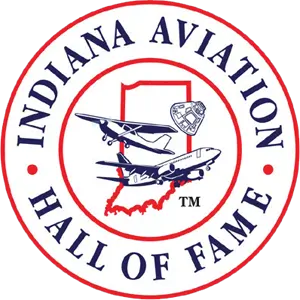
Abe Silverstein
Abe Silverstein was born in Terre Haute, Indiana, on September 15, 1908. He attended Rose Polytechnic Institute graduating in 1929 with a Bachelor of Science degree in mechanical engineering. He began his remarkable aerospace career as an aerodynamicist for the National Advisory Committee for Aeronautics (“NACA”) at the Langley Memorial Aeronautical Laboratory and in 1934 also earned his mechanical engineering professional degree through Rose Polytechnic. While with NACA, Abe helped design a full-scale wind tunnel. In 1943, Abe was transferred to the Lewis Flight Propulsion Laboratory in Cleveland where he rose to be chief of the Engine Installation Division and of wind tunnel research program.
During WWII, Abe directed research in the propulsion aerodynamics of reciprocating and early turbojet engines, resulting in major improvements to the performance of military aircraft. He also pioneered research on large-scale ramjet engines. Abe joined the NACA High-Speed Panel in 1944 and advocated for a supersonic wind tunnel. He was responsible for the conception, design, and construction of the nation’s first, and the world’s largest and most powerful supersonic propulsion wind tunnel which significantly advanced the development of supersonic aircraft.
In 1958, Abe played a key role in the organization and development of the new National Aeronautics and Space Administration. He was named NASA’s Director of Space Flight Programs in October of that year. Over the next three years, Abe planned and directed NASA’s satellite programs and first manned space flight missions: Project Mercury, Gemini, and Apollo. Later, Abe selected the site for the new NASA space center, which he named the Goddard Space Flight Center, serving as its acting director.
In 1960, he chaired the “Saturn Vehicle Evaluation Committee”–known unofficially as the Silverstein Committee—where he and his colleagues advocated the use of liquid hydrogen engines in the Saturn rocket upper stages. This would be the first practical application of the liquid hydrogen engine, named Centaur, for use in the high thrust stage of Atlas and Titan missiles.
In 1961, NASA was reorganized and Abe returned as director of the Lewis Laboratory taking on responsibility for the Centaur, NASA’s workhorse launch vehicle, which was used to send the Surveyor probe to the Moon; the Viking to Mars; the Pioneer to Jupiter and Saturn; and Voyager to Uranus and Neptune, along with scores of other launches.
The highlight of Abe Silverstein’s many achievements occurred in July 1969 when the Apollo 11 delivered men to the lunar surface and returned them safely to Earth. He retired from NASA a few weeks later after 40 years of government service, recognized by his peers and astronauts as “the architect of America’s space program.”
Abe passed on June 1, 2001 at age 92.
Abe Silverstein was a visionary engineer whose legacy of innovation continues to this day. He was enshrined in the National Aviation Hall of Fame in 2015.
For extraordinary achievement and service to space flight, Indiana, the nation, and the world, Abe Silverstein is inducted into the Indiana Aviation Hall of Fame the 8th day of July 2020.
